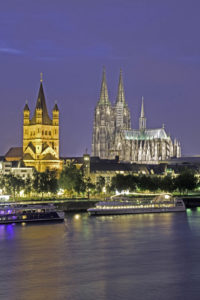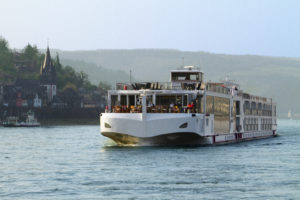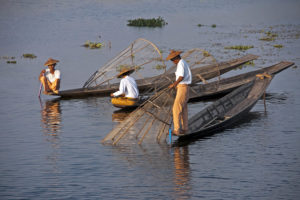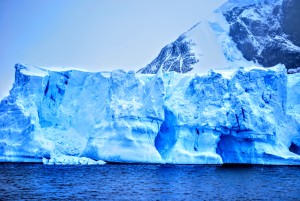
Cologne Cathedral on Rhine River at night — but watch for water levels. Photo by Dennis Cox/WorldViews
What are the best seasons to travel?
I’m tempted to answer that FAQ with a one-word answer: Anytime. You’ll almost always find something positive in any trip, even if it rains every day.
But that’s the easy way out. A lot depends on where you’re going and what your specific interests are in that place. And a few destinations are limited to one particular season of the year.
Weather is often — though not always — the key factor.
A trip to Finland in summer, for instance, is very different than a trip to Finland in winter. Both have their charms — as do the fall and spring seasons there, for that matter. But you might as well be traveling to two different countries in the Finnish July and January.
Most travelers know that the sun shines brightly in northern Finland most of the day and night in June and July and barely appears at all in December and January; one of my indelible memories of a trip to Rovaneimi, a Finnish ski resort town situated right on the Arctic Circle, is of ice-covered trees glowing pale pink as the sun struggled to peek above the horizon between the hours of 10 a.m. and 2 p.m. Before and after those four hours lay darkness.
Some other destinations are trickier, with more subtle seasonal changes. Southeast Asia, and most countries near the Equator, come to mind. Nonetheless, there are still months that are hotter or drier than others, and that can make a real difference in your overall experience.
Here, then, is the first part of of my handy guide to not just where to go, but when. We’ll start with river and coastal cruises. Print and save!
European river cruises: Many first-time European river cruisers — and even some veteran cruisers — may not realize that flooding or drought conditions can vastly impact your cruise. Flooding is more likely following spring rains and snow melt, while drought is more likely to plague the fall seasons, following dry summers.

A Viking Longship along the Rhine. Photo from Viking River Cruises.
If water levels are too high or too low, the river ships simply can’t make the journey from point A to point B on the Danube, for instance. That means you’ll be bused at least part way along the rivers — a far cry from what you signed up for.
Summers may be the safest, but they’re also the most crowded and expensive — and there are no guarantees even then. I would suggest paying close attention to drought or flooding conditions in Europe before booking a river cruise there.
Norway’s Hurtigruten: The Hurtigruten is a memorably scenic voyage up and down the Norwegian coast– possibly the most beautiful coastline in the world, studded with islands, mountains, and fjords. You can travel either from Bergen in the south to Kirkenes near the Russian border in the north, or south from Kirkenes to Bergen. Each takes a week, and you cross the Arctic Circle along the way, as well as visit the most northerly point in Europe.
This is no ordinary cruise: the Hurtigruten employs a small fleet of half cruise, half cargo ships, which make frequent stops along the coast to deliver supplies — and passengers — to cities and towns along the way. Some stops vary depending on whether you’re going north or south.

You’ll see the Northern Lights on a winter Hurtigruten voyage.
And it runs all year, meaning — in this far northern region — that you can travel in almost complete darkness in winter (which true Hurtigruten aficionados make sure to do). So, while I highly recommend the summertime version if it’s your first or only Hurtigruten run, you do have the option of experiencing Scandinavia in winter.
Note: In whatever season you cruise in northern Europe, including high summer, be sure to pack warm clothing.
Southeast Asia river cruises: – The Mekong River, which flows through Viet Nam and Cambodia, is a hot destination for river cruising — and no wonder: life on and along the river is endlessly fascinating, and attractions such as the ruins of Cambodia’s Angkor Wat await. The Irrawaddy River in Myanmar is another prime waterway.
Much of Southeast Asia essentially has three seasons. Dry season runs from November to February, followed by the two warmest — and highly humid –months, March and April. Rainy season then begins in May and extends through October.
Which season is “best” for Southeast Asia river cruising? It may be the rainy season — which permits expedition-sty;e boats to explore flooded forests, lakes, and tributaries that would otherwise be out of reach. And since it usually only rains an hour or so each afternoon, it doesn’t interfere that much with the cruise experience.

Fishermen in Myanmar. Photo by Dennis Cox/WorldViews
Amazon river cruises: The Amazon has two seasons: flooded and dry. The flooded season runs from December to April or May, while the dry season runs from June to December. The latter tends to be cooler than the flooded season, though despite its name it gets a fair amount of rain as well.
Still, in flooded season, Amazonia’s rivers will be higher and flooded forests and tributaries will be accessible, allowing for greater wildlife viewing, especially monkeys in the trees and birds feeding on vegetation. One downside is that hiking trails on land will be less accessible; there will also be more mosquitoes.
The dry season, on the contrary, will be warmer (but still have heavy rains at times). You’ll have access to more hiking trails on land but less access to flooded forests and tributaries and wildlife found within them. However, you’re more likely to see flocks of migrating birds.
At any time of year, expect hot temperatures and a fascinating voyage.

Epic journeys to Antarctica are available from November to March each year. Photo by Catharine Norton
Antarctica: Unless you’re a research scientist, your Antarctica visit will be limited to the Antarctic summer, which is winter in the northern hemisphere — late October or early November through March and into early April, when the waters off Antarctica are comparatively ice free. Most visitors — limited to around 30,000 a year — arrive by cruise ship. Ships carrying more than 500 passengers are not allowed to land on Antarctica itself, so small, expedition-style cruise ships are the way to go.
Early in the Antarctic summer, you can expect to see penguin and elephant seal courtship rituals, while the later months see the birth of penguin chicks and seal pups. By March the adult penguins are mostly headed out to sea, but whale and seal sightings increase. December and January bring the most daylight hours, prime time for photographers.
Alaska: Cruising season along the coast runs from May into September; if you’re willing to take a chance on cold temperatures, May, late August and September bring fewer crowds (and often perfectly nice weather). In mid-summer, you might find five large cruise ships docked in one small town; early or late in the season, you may be the only game in town.
Next up: The best seasons for African safaris












Leave a Reply